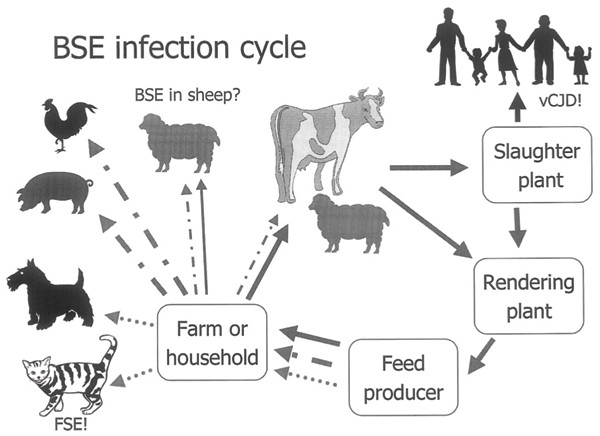Bovine Spongiform Encephalopathy (BSE)

Bovine Spongiform Encephalopathy (BSE) Spongiform encephalopathies (SEs) are degenerative disorders of the brain that occur in a number of species. They are recognized by the clinical appearance of the affected animal and the characteristic histological changes they produce in the brain. One of the common Spongiform encephalopathy is Bovine Spongiform Encephalopathy (BSE),which mainly affect cattle. Bovine Spongiform Encephalopathy (BSE), widely referred to as “mad cow disease,” is a progressive and fatal neurologic disease of cattle. It is caused by an unconventional transmissible agent, an abnormal prion protein . "Bovine" means that the disease affects cows, "spongiform" refers to the way the brain from a sick cow looks spongy under a microscope, and "encephalopathy" indicates that it is a disease of the brain. The infection spreads to cattle by the practice of feeding them abattoir waste and offal which may have contained scrapie infected meat.

